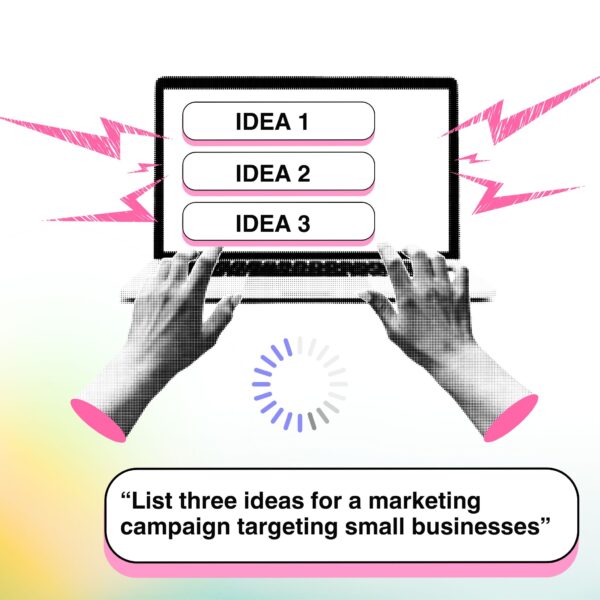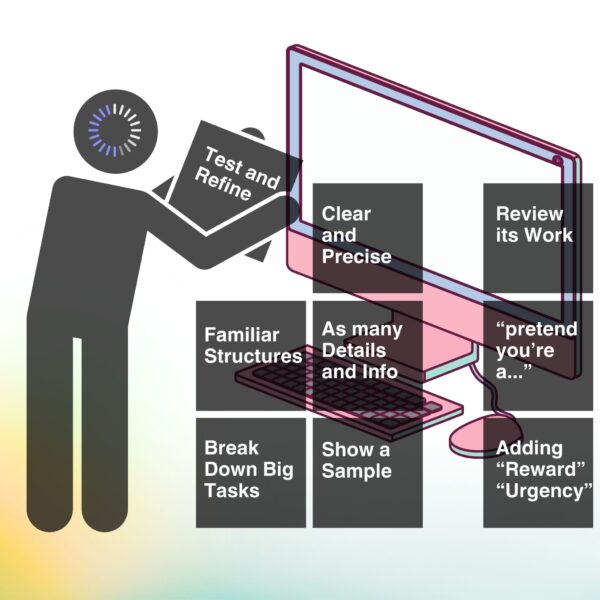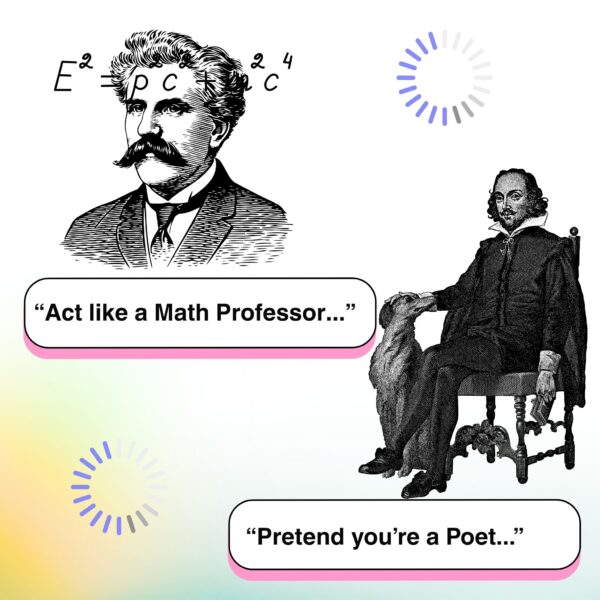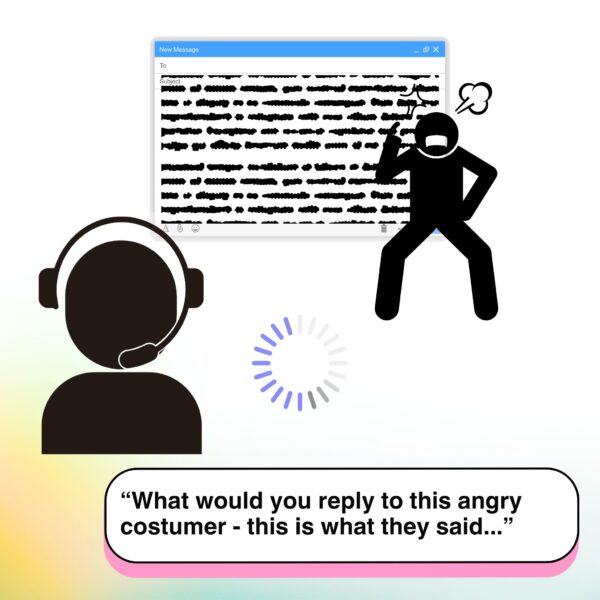AI prompts have exploded in popularity as people everywhere turn to tools like ChatGPT, Gemini, and Claude to write, brainstorm, automate, and create. But if you’ve ever wondered why some folks get mind-blowing results—and others just get “meh”—the trick often comes down to how you prompt the AI. In fact, “Few-shot prompting” can take accuracy from 0% to 90%. Whether you’re a business leader, a creative, or just AI-curious, mastering prompts will save you time, spark ideas, and help you work smarter.
In this guide, you’ll learn what AI prompts are, how to use them, where to find the best prompt libraries, and how to avoid rookie mistakes. We’ll even show you how to harness prompts for business, including inside powerful tools like Aurora Slides.
What Are AI Prompts?
At the simplest level, an AI prompt is just the text, question, or command you give to a language model—like ChatGPT, Gemini, or Claude—to get a specific response. Think of it as the “instruction” that guides the AI on what you want it to do. For example, typing “Summarize this article in three bullet points” or “Write a funny birthday poem for a dog lover” are both prompts.
Prompts can be as basic or as detailed as you need. The clearer and more specific your prompt, the better the AI’s output. For more on the basics, see OpenAI’s guide.
To picture this: you might ask an AI, “List three ideas for a marketing campaign targeting small businesses.” In seconds, you’ll get creative suggestions tailored to your needs.

Why AI Prompts Matter for Beginners and Businesses
So why should you care about crafting better prompts? For starters, the right prompt can save hours of work, spark new ideas, and help you get more value out of AI tools. In fact according to a SuperAGI Report:
“With the average ROI increase of 70% for marketers who use AI, it’s clear that investing in an AI blog generator can have a significant impact on your content marketing strategy.”
Another impressive statistic is that optimized content with AI is currently showing engagement rates that are “83% higher than content created using conventional methods.”
From drafting emails to writing product descriptions, or even generating code, prompts are the “remote control” for your AI assistant. They’re especially useful for busy teams, solo entrepreneurs, and anyone who wants to get more done with less hassle.
Let’s look at a real-world example: A small business owner wants to follow up with a client but can’t find the words. She types, “Draft a friendly follow-up email thanking the client for their recent purchase and asking for feedback.” In seconds, the AI generates a professional, personalized email – no stress, no writer’s block.
Types of AI Prompts and How They Work
Not all prompts are created equal. There are different types, each with its own strengths:
- Zero-shot prompts: You ask the AI for something with no example, e.g., “Write a joke about llamas.”
- Few-shot prompts: You give a couple of examples to set the style, e.g., “Write a joke about llamas. Example: Why did the llama cross the road? To avoid the drama!”
- Chain-of-thought prompts: You break down the task into logical steps, e.g., “First, list the customer’s problem. Next, suggest three solutions. Finally, summarize the best one.”
Here’s where it gets interesting: Say you want a summary, but the first AI answer is too long. Instead of giving up, you can prompt again: “Make it shorter and add a call to action.” Prompting is an iterative process—the more you refine, the better your results.

Best Practices for Writing Effective AI Prompts
According to OpenAI Platform Guide and the Youtube Video “AI prompt engineering in 2025: What works and what doesn’t | Sander Schulhoff “ If you want consistently great results, keep these best practices in mind and what to avoid:
- Be clear and precise: Instead of asking for something vague like “Write a blog post,” spell out exactly what you want. For example, “Write a 500-word blog post for beginners explaining what AI prompts are, including three practical examples.” The more direct you are, the better.
- Share background info: Give the AI details about your audience, the format you’re after, or the style you prefer. Even a brief description of your goals or the context of your project can make a big difference.
- Show a sample: If you have a specific format or tone in mind, paste in an example or two. AI models learn fast from patterns—seeing what you want helps them deliver it.
- Stick to familiar structures: Use straightforward, common layouts like Q&A, lists, or labeled sections—formats the AI is “used to seeing.” This increases the chance you’ll get the style or structure you expect.
- Break down big tasks: For complex requests, ask the AI to tackle each part step by step. You might say, “List the main steps before you answer,” or “First, summarize the problem, then suggest solutions.”
- Ask the AI to review its work: After you get an answer, follow up with, “Can you double-check your response and make any improvements?” Often, this simple step results in a stronger output.
- Experiment and refine: Don’t expect perfection on the first try. Keep tweaking your prompt or asking for changes until you get what you want.
- Don’t rely just on “act as…” prompts for accuracy: While asking the AI to “act like a professor” or “pretend you’re a technical writer” can help with creative tasks or style, it won’t magically make answers more correct.

Common Mistakes To Avoid
- Being too vague: Requests like “Write something about marketing” are too broad. Spell out what you need—topic, length, format, or key points.
- Trying to do too much at once: If you ask for a blog, a poem, and a tweet all in one go, the AI will likely struggle. Handle one request at a time for best results.
- Skipping examples: If you want a certain style or format but don’t provide an example, you’re leaving a lot to chance. Always give a sample if you can.
- Not giving enough background: Assuming the AI knows your business or your goals can backfire. Sharing even a bit of context can lead to much better answers.
- Settling for the first answer: If the first result isn’t right, don’t just accept it. Edit your prompt, clarify your needs, or ask for a revision.
- Using personas for accuracy tasks: While telling the AI to “act like a scientist” might help with tone, it won’t necessarily improve factual accuracy. Use this mainly for stylistic tweaks.
- Adding “reward” or “urgency” language: Telling the AI things like “this is really important” or “I’ll tip you” doesn’t improve its performance.
- Forgetting to specify the output format: If you want a table, list, or Q&A, say so. Otherwise, the AI will guess.
Here’s a quick example: When trying to get the AI to spot signs of distress in forum posts, results improved dramatically when extra context and definitions were provided. The takeaway? The more relevant details you include, the better your results.
Watch the full video from Lenny’s Podcast here:
A Cute Analogy on How To Approach AI
Think of using AI prompts like giving instructions to a super-intelligent child who can read and process information faster than anyone, but doesn’t have the same life experience or common sense as an adult.
If you’re vague or use slang, they’ll take your words literally or miss the point entirely. But if you explain exactly what you want, step by step, and give examples, they’ll deliver amazing results in record time. The more specific and careful you are with your instructions, the more likely you are to get exactly what you need.
The Best AI Prompt Libraries and Prompt Galleries
If you’re tired of reinventing the wheel, there’s good news: The internet is packed with “ai prompt libraries,” “prompt libraries,” and “prompt galleries” full of ready-made ideas.
- AI prompt library: Curated collections of high-performing prompts for different platforms and uses.
- Prompt gallery: Visual or categorized collections, sometimes with ratings or community feedback.
- Prompt library: General term for any organized set of prompts.
Here are some of the most popular resources:
-
- Learning Prompt Community
- Prompt Engineering Guide
- You can build your own of the prompts that’ve been working for you and your workflow specifically!
Many are free and updated regularly, so you’ll always find fresh ideas. These libraries are fantastic for inspiration and rapid experimentation – just copy, tweak, and go.
Let’s say you’re writing a business proposal: Search “business proposal prompt” in a prompt library, grab a template, and customize for your needs. Easy.
AI Prompts for Business: Real-World Applications
Businesses are using AI prompts everywhere – from automating emails to creating presentations and drafting policies. Here’s a quick table of sample prompts and where you might use them:
|
Prompt Example
|
Purpose/Situation (Expanded)
|
Re-prompt Example
|
|---|---|---|
|
Summarize today’s team meeting notes and highlight action items
|
After a team meeting, you want a concise recap to share with all participants, focusing on decisions and next steps.
|
“Can you organize the action items by team member and make the summary no more than 5 bullet points?”
|
|
Draft a follow-up sales email tailored to [client name]’s last inquiry
|
You had a conversation with a potential client—now you need a personalized email referencing their questions and gently moving the deal forward.
|
“Please make the tone warmer and add a direct question about their timeline at the end.”
|
|
Generate 5 social media post ideas for our new product launch.
|
You’re preparing a marketing campaign and need fresh, engaging post ideas that highlight unique product features.
|
“Can you rewrite these ideas to target eco-conscious customers and include a call to action?”
|
|
Create a project plan outline for onboarding a new client.
|
You’re starting work with a new client and need a structured plan to kick off the relationship, outlining steps and responsibilities.
|
“Add estimated timelines to each step and specify which department is responsible.”
|
|
List frequently asked questions and answers for our support site.
|
You want to improve your self-service help center by anticipating and answering common customer questions.
|
“Please group the FAQs by topic (billing, technical support, account management) and make the answers less technical.”
|
Also when it comes to costumer service, you can also use AI to prompt a smart but empathetic reply using your history with the customer as context. A Gartner study claims that 80% of companies are already using AI to improve customer experience, and predicts that AI is set to be part of 100% of customer interactions in the future.
Imagine this: Your support team uses a prompt like, “List the top 10 troubleshooting steps for our software.” Instantly, they have a comprehensive FAQ to share with customers—saving hours each week.

Using AI Prompts in Aurora
One of the most powerful business uses for prompts is inside the Aurora ecosystem. Aurora lets you use prompts to quickly generate documents, organize information, and build presentations in Aurora Slides.
Here’s how it works: You open Aurora Slides, start a presentation, and prompt, “Turn these meeting notes into a client-ready pitch deck.” Instantly, your content is organized into slides, with suggested layouts, talking points, and even speaker notes—all from a single, clear prompt. You can then add, “Make Slide 3 less technical and add a client testimonial,” and Aurora Slides updates your deck in seconds.
This approach saves hours and ensures your team can focus on the message, not formatting. For best results, always prompt Aurora Slides with your intended audience and goal.
Communities for Mastering AI Prompts
If you want to level up your prompt game, there are great resources and communities to help:
Whether you prefer self-paced courses, video tutorials, or lively community forums, you’ll find expert advice on prompt engineering, real-world examples, and plenty of peers to learn from. When evaluating resources, always check for up-to-date content and active community engagement.
Key Takeaways & Next Steps
Let’s recap:
- AI prompts are the commands you give to tools like ChatGPT, Gemini, or Aurora Slides to get work done, fast.
- The best prompts are clear, specific, and tailored to your audience and goal.
- There are tons of free prompt libraries and communities to help you learn and experiment.
- In business, prompts can automate everything from emails to presentations, saving time and increasing efficiency.
- Tools like Aurora Slides take prompting to the next level—turning your ideas into professional output in minutes. Checkout AI Prompts for Generating PowerPoint Slides from a Manuscript.
Ready to get started? Try searching for a prompt library, experiment with your own prompts, and prompt your way to your next big win!
Frequently Asked Questions (FAQs)
How do I write a good AI prompt for business use?
A: Be specific about your goal, provide context, and clarify the audience. For example: “Draft a three-paragraph welcome email for new customers in a friendly, informal tone.”
Are AI prompt outputs always reliable?
A: Not always. AI can “hallucinate” or make mistakes, especially if prompts are vague. Always review and edit outputs for accuracy.
Where can I find more advanced AI prompt examples?
A: Explore resources like Prompt Engineering Guide and Learning Prompt Community for advanced techniques and community-curated prompts.
How can I use AI prompts with Aurora Slides to create presentations faster?
A: With Aurora Slides, you can simply prompt the AI in your own words – like “Turn my meeting notes into a client-ready pitch deck” or “Summarize this project plan as slides for executives.” Aurora Slides automatically organizes your content, suggests layouts, and generates a polished, on-brand presentation, all in minutes. This makes it easy for anyone—even non-designers—to create visually compelling decks with just a prompt.
What are some best practices for prompting in Aurora Slides?
A: For best results in Aurora Slides, clearly state your audience, topic, and goals in your prompt. For example, “Create a sales presentation for small business owners, include a competitor comparison and call-to-action slide.” The more context you give, the more tailored and impactful your presentation will be. You can also ask Aurora Slides to revise, adjust tone, or add visuals at any stage by prompting in plain language.
